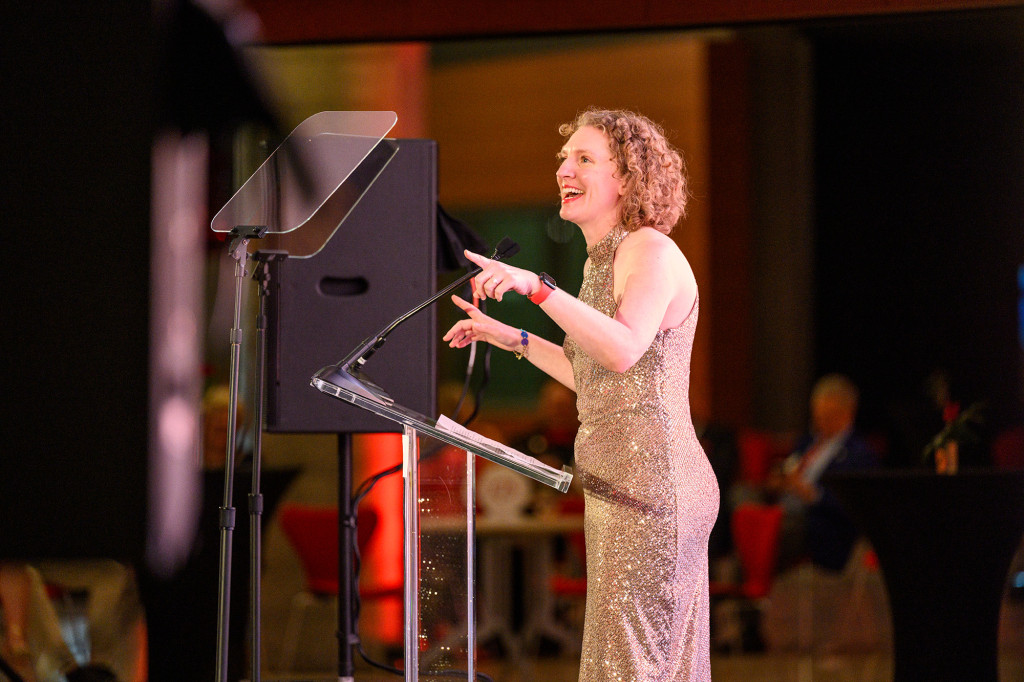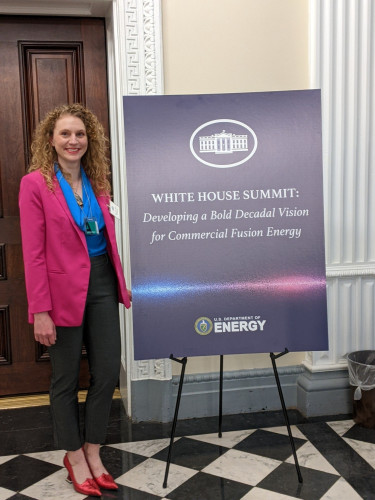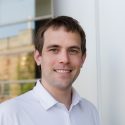Q&A with Prof. Steffi Diem, a UW–Madison fusion scientist and 2024 U.S. Science Envoy

Steffi Diem speaking at UW–Madison’s 175th anniversary gala in October 2023. Diem, a fusion energy expert, has been named a 2024 U.S. Science Envoy, highlighting the growing national and global recognition of the role of fusion in building a clean and renewable energy future. Photo: Althea Dotzour
Steffi Diem, a University of Wisconsin–Madison professor of nuclear engineering and engineering physics, has been selected to serve as a U.S. Science Envoy for the Department of State in 2024. The federal program empowers leading U.S. scientists to leverage their expertise and networks with the goal of increasing international cooperation around important scientific endeavors.
Diem, a fusion energy expert, specializes in heating the ultra-hot fuel for fusion and confining it within efficient and compact magnetic bottles. Her selection as one of four new U.S. Science Envoys in 2024 — the program’s first all-women cohort — highlights growing national and global recognition of the role of fusion in building a clean and renewable energy future.
Formerly a national laboratory scientist, Diem joined the UW–Madison College of Engineering faculty in February 2020 as her interest in teaching, mentorship and public engagement grew. Today, she leads the college’s Pegasus-III experiment, a new U.S. Department of Energy-sponsored project aimed at developing innovative approaches to start up future fusion power plants.
Diem is also involved in Wisconsin Alumni Research Foundation-funded interdisciplinary research that’s focused on reimaging fusion energy design by centering energy equity and environmental justice. University Communications recently caught up with Diem to learn more about her research efforts. Below is an edited Q&A from that conversation.
What’s your research background?
My research focuses on heating gas hotter than the sun to harness clean energy via fusion. Basically, how do we heat up hydrogen to be 10 times hotter than the sun and hold on to it long enough so it fuses so we can harness that for clean energy here on Earth? My research career has been focused on making efficient magnetic bottles, called tokamaks, to confine plasma with the use of super powerful magnets. My specific specialty is designing microwave systems that are able to heat up material to temperatures hot enough for fusion to occur in these magnetic bottles.
How could fusion contribute to a clean energy future?
This is where it gets fascinating. The fuel for fusion is just heavy forms of hydrogen, which is the most abundant element in our universe. And the fusion energy reaction is the most abundant reaction going on in the universe. It’s very technically challenging to achieve fusion on Earth because of the really high temperatures that are needed. But figuring out how to power humanity on hydrogen via fusion could change everything. The energy a person consumes in their lifetime could be provided via fusion from the amount of heavy hydrogen found in a bathtub’s volume of water combined with the lithium from about six laptop batteries. That’s equal to burning about 280 tons of coal.
As commercialization of fusion becomes closer to reality, do you sense a shift in how people perceive the energy source?
For most of my career, the fusion research community has been focused on creating the conditions for fusion reactions to actually occur. In 2022, the National Ignition Facility showed that they could do this and, crucially, that they could create more energy out of the reaction than what was required to create it. This is what we have been challenged as a field to demonstrate — the feasibility of controlled fusion here on Earth, and right now we’re in this unique time where scientists around the world are defining the steps we need to take to actually commercialize fusion. There’s accelerating interest from governments, universities and private industry, and I would say community members too. I was incredibly excited to be invited to speak at the White House Fusion Summit on developing a strategy to commercialize fusion within a decade.

Steffi Diem at the 2022 White House Summit on “Developing a Bold Decadal Vision for Commercial Fusion Energy.”
What will you be doing in your role as a U.S. Science Envoy for the State Department, and what do you think it signals about the importance of fusion to global affairs?
The program was started in 2010 to engage U.S. scientists and engineers to build connections and look for opportunities for international cooperation. The U.S. has already announced several strategic partnerships that they are building with other countries focusing global support to accelerate fusion energy development. I’m excited to see how I can support these efforts to continue to build new partnerships. So far, I only know a little bit about what I’ll be doing as an envoy, but I’ll be going to Washington, D.C., soon for an orientation and to begin crafting a plan for fusion. I’m honored to be the first fusion energy envoy and incredibly excited to be in the first all-women cohort!
You’re involved in a multi-institution group using machine learning tools to advance fusion research. Why is that work important?
Yes, we’re part of a collaboration, led by researchers at the Massachusetts Institute of Technology, integrating machine learning to help us more quickly predict and control fusion experiments. We’re making Pegasus-III data, and these tools we’re developing, open for students and researchers beyond our group, prioritizing open science and interdisciplinary collaboration. I’m especially excited that we will be bringing in student researchers from data sciences at UW. The group is also focused on fostering a more diverse and inclusive fusion workforce. This field has been the least diverse field, with less than 10% women, so it’s great to be a part of a collaboration where four out of the five principal investigators are women.
Is there anything else you’d like to add about your work or initiatives you’re involved in?
One fun thing I do is collaborate with the National Academies Science and Entertainment Exchange as a science consultant for the entertainment industry to promote realistic depictions of science in the media. I’ve collaborated with writers for TV shows and have served as a consultant for news organizations. I’m also working with other researchers on campus and elsewhere to host fusion focus groups around Wisconsin. We want to engage with the public early to understand shared values and priorities as we head toward a major energy transition.
Tags: engineering, faculty, faculty awards, sustainability



